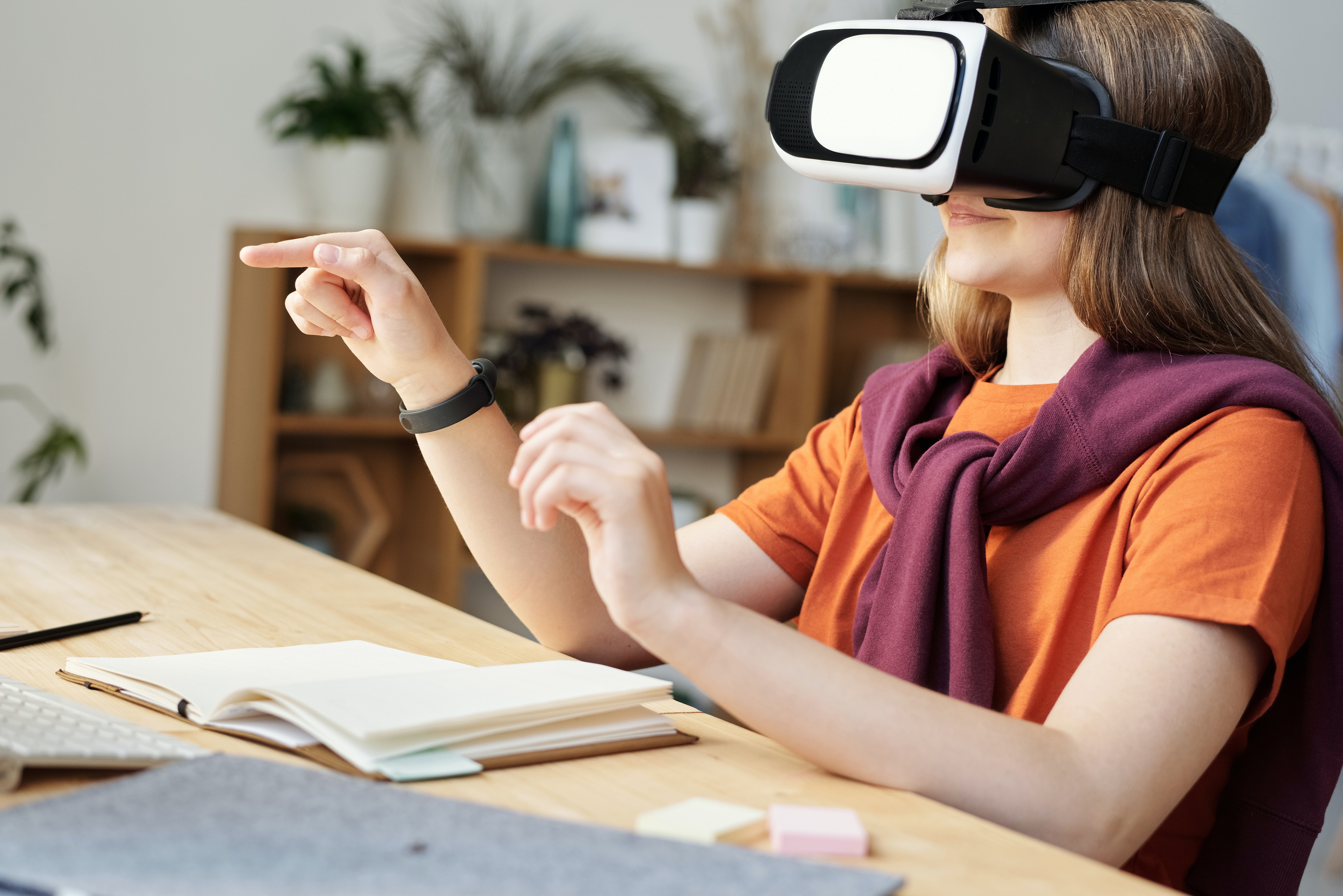How Asian Institutions Are Using
AR & VR in EdTech
2021/03/10

Photo by Julia M Cameron from Pexels
Augmented Reality and Virtual Reality – How Asian Institutions Are Using These Technologies in EdTech
Imagine sitting in the comfort of your bedroom to attend classes for school, interacting with your coursemates, who are sitting next to you – all without leaving your bed. The use of virtual reality (VR) in education technology (EdTech) has allowed for such a scenario to happen. Students can attend interactive classes virtually – all they need is headgear.
This is just one example of the direction in which education is heading as EdTech continues to evolve around the world, incorporating both VR and augmented reality (AR). VR removes its user from their physical setting and transports them into an alternate reality via headgear worn by the user. In contrast, AR retains the user's physical environment and augments it with elements to enhance the experience.
Studies have estimated that, by 2024, the VR and AR industry will be worth approximately US$300 billion, which is almost 10 times the projection for the year 2021. While VR and AR are still heavily embedded in gaming, the EdTech industry comes a close second as, globally, governments and institutions are pushing for the use of technology in education.
Currently, China’s VR market is ahead compared to those of other countries; pre-pandemic, China’s VR market was predicted to be worth US$7.9 billion by this year. This is not surprising, considering that China's government encourages greater use of VR in its classrooms, from kindergarten to university, than in the West, where VR technologies are used mainly in universities.
China started introducing VR several years ago, and used it to connect students in rural areas seeking vocational training to institutions based elsewhere in the country. Today, VR headsets are a common sight in Chinese classrooms and at learning centres. Companies such as Squirrel AI Learning are promoting fully immersive VR pods, where students can sit and be educated by artificial intelligence ‘tutors’ alongside their peers.
The COVID-19 pandemic has also boosted the use of VR technologies, as seen in the case of Singapore. Due to pandemic restrictions, normal teaching methods for doctors in training were severely disrupted, as they had to minimise contact with patients and were unable to enter operating theatres. In response to this, the NUS Yong Loo Lin School of Medicine reinvented how its students were educated, using VR in a ‘digital gamified environment’, which allowed them to receive hands-on training in operating theatre procedures.
By practising their skills via VR devices, students were allowed to observe, interact and repeatedly train, without having to worry about making mistakes with potentially catastrophic consequences, as they were able to practise without endangering their patients’ lives. This freedom to cultivate and hone their skills through a realistic, immersive experience allowed them to develop the confidence they will need to do this work in the real world when the time comes.
Similarly, Nanyang Technological University (NTU) in Singapore has also adopted VR in its bid to support COVID-19 research and education. The university has developed VR technology that allows students and researchers to virtually interact with the SARS-CoV-2 virus without exposing themselves to unnecessary danger. Additionally, NTU uses VR and AR to conduct lab classes, optometry modules, and anatomy simulation.
While the use of VR and AR may still be relatively new in Asia, it appears to be a fast-growing industry, as there are many benefits associated with these technologies, especially in the application of EdTech. However, it is also worth noting that the implementation of these technologies does not come cheap, which may, in the long run, deter widespread implementation of VR and AR throughout classrooms in Asia.
